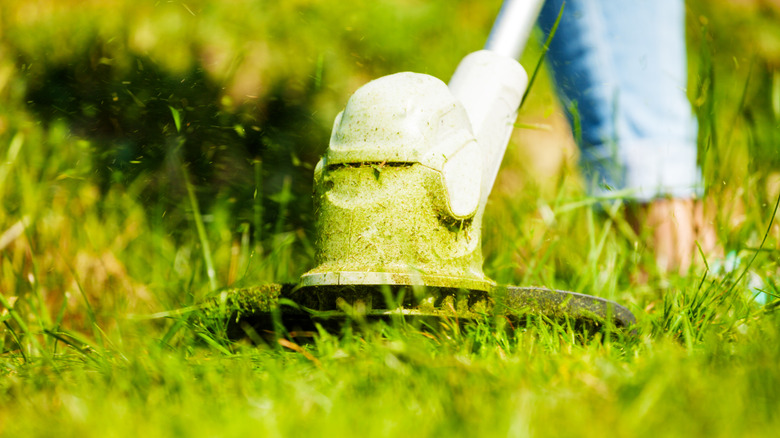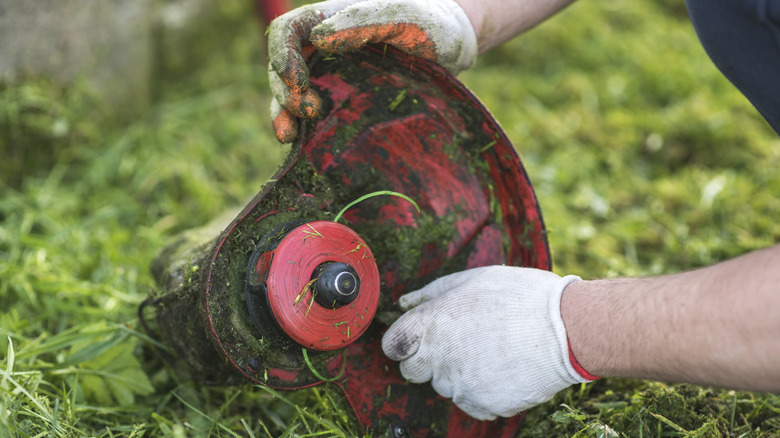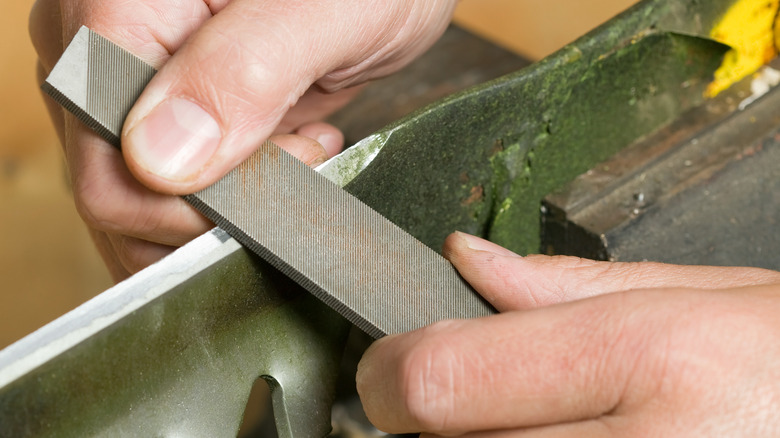How To Clean & Sharpen A Metal Weed Wacker Blade For A Crisp Cut
There are a wide variety of brush cutters or weed wackers on the market these days for taking down pesky weeds and bits of grass that your lawn mower can't reach. Many can be fitted either with a string trimmer to cut through grass and other small plants, creating razor sharp garden edges, or with a metal blade for dealing with larger woody plants. Regardless of the exact weed wacker model you opt for, if you use a weed wacker with a metal blade, then it's more than likely due for a good cleaning and sharpening.
Weed wacker blades, like all garden tools, work best when they are rust-free, clean, and sharp. Not only should you not use dull, dirty, and rusty garden tools due to an increased risk of injury, but tools also don't work as well if they aren't clean and sharp. Luckily, cleaning and sharpening your metal weed wacker blade isn't a difficult process — it just requires rasp files, a wire cleaning brush, a clamp, and, of course, some patience, protective gloves, and goggles.
Cleaning your metal weed wacker blade
If you use a battery powered weed eater, begin by removing the battery pack. Then, consult your specific weed wacker's instruction manual for advice on how to remove the blade. This is generally a simple matter of removing the bolts that hold the blade in place, just as you would if you were replacing the blade.
Once you've removed the blade from your weed wacker, you're ready to secure it into your clamp or vise and begin cleaning. A wire cleaning brush and soapy water should be all you need to remove any dirt, debris, or even rust from your blade. After you have cleaned and dried your weed wacker blade, be sure to lubricate it with an oil designed for blades and clippers. These are available at most garden centers and should help prevent rust and corrosion. Silicone-based lubricants are also an option.
Sharpening your metal weed wacker blade
Once your blade is clean and oiled, you should easily be able to see if there are any major dents or dings. If there is significant damage, you may need to replace your blade instead of simply sharpening it. As long as there is no major damage, you can use your rasp files to sharpen the existing blade edge. Make sure your files are damp first, and if you have multiple files, you can start with a coarser grain and then move on to a finer one to finish. Remember that you aren't trying to create a new edge on the blade, just sharpen the existing one, so simply go along the current blade edge with slow and even strokes until it is shiny. How many passes this requires depends on how dull the blade is to begin with.
After you have sharpened the cutting edge of the blade, go over its other side once or twice with the file if necessary as well to remove any metal burrs that have formed. As many metal weed wacker blades are made of a disc with multiple blades, you may need to carefully rotate the blade in your vise or clamp to ensure all sections are sharpened and cleaned. Once you've finished sharpening the blade, you can lubricate it again and then reattach it to your weed wacker to ensure it works well and doesn't catch.


